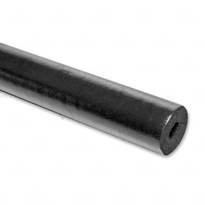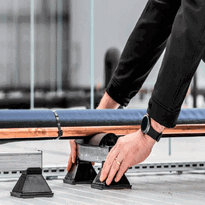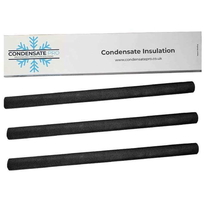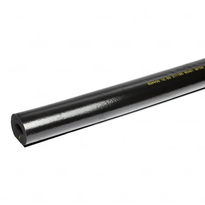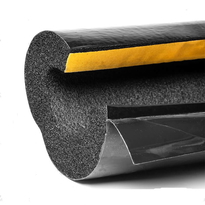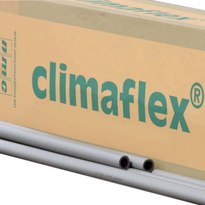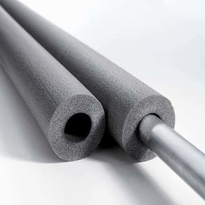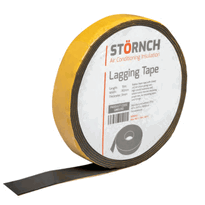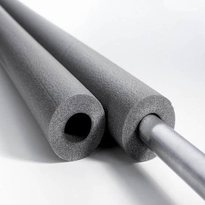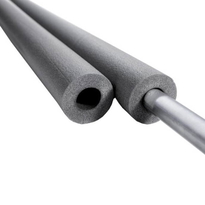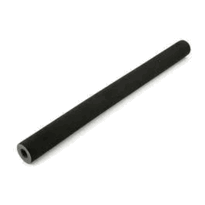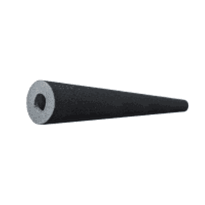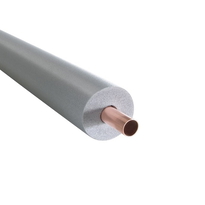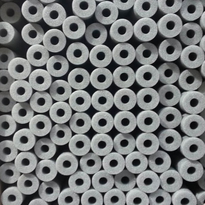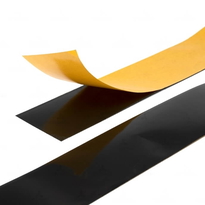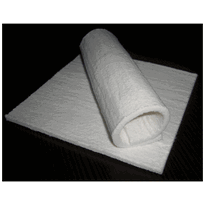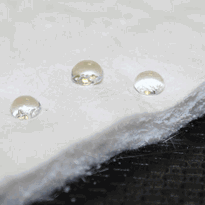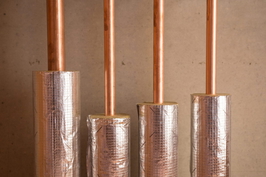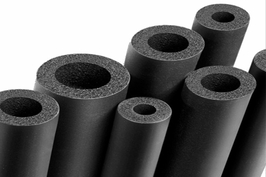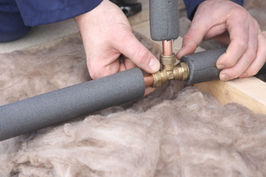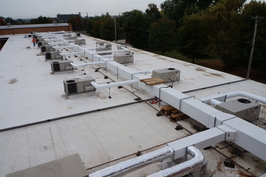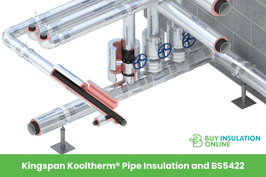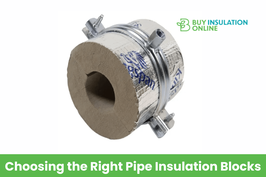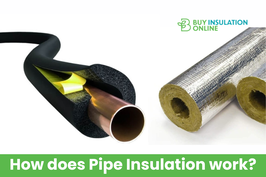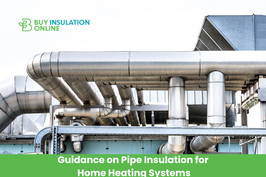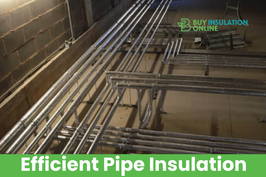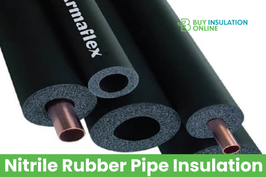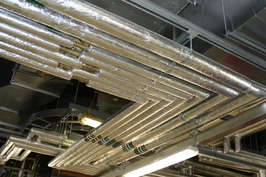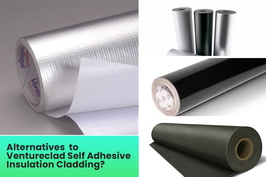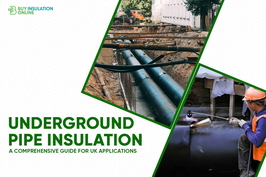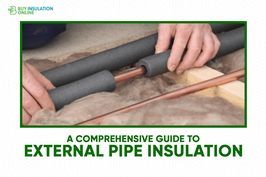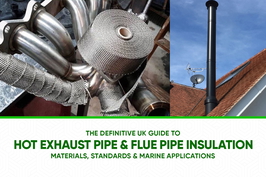Insulated Cover for Outdoor Pipes
Insulated covers for outdoor pipes act as vital barriers against low temperatures, helping to prevent freezing, bursting, and subsequent water damage by maintaining stable pipe temperatures. These covers are typically manufactured from durable materials such as foam, polystyrene, or foam glass, which resist moisture ingress and are adaptable to a variety of pipe sizes.
Correct installation is essential to ensure optimal protection. This involves accurately measuring the pipe diameter, fitting the cover securely in place, and sealing all joints thoroughly to prevent moisture from penetrating. Proper sealing not only enhances insulation performance but also prolongs the lifespan of the cover.
Regular maintenance of insulated pipe covers is important to sustain their effectiveness. Inspecting for signs of damage, wear, or moisture ingress allows for timely repairs or replacements. Additionally, adding protective layers such as weatherproof cladding can improve durability, especially in exposed outdoor environments.
A comprehensive understanding of these insulation aspects enables homeowners and property managers in the UK to maximise pipe protection during colder months, reducing the risk of costly repairs and ensuring the continued operation of essential water supplies.
Benefits of Using Insulated Covers on Outdoor Pipes
Using insulated covers on outdoor pipes provides a range of practical benefits centered on protecting plumbing systems from environmental damage and reducing associated costs.
Primarily, these covers create a barrier that shields pipes from cold air, significantly diminishing the risk of water inside freezing and expanding. This prevention of freezing helps to avoid pipe bursting, which can cause costly water damage repairs, especially during the colder months when temperatures drop sharply.
In addition, early installation of insulated covers helps to maintain pipe integrity by counteracting the pressure exerted by expanding ice, thereby extending the lifespan of the pipes. Properly designed insulation provides equal or superior thermal performance compared to traditional insulation.
The covers also help reduce water loss from leaks caused by freeze-thaw cycles, leading to lower utility bills and supporting overall system health.
Types of Insulation Materials Suitable for Outdoor Pipes
When selecting insulation for outdoor pipes, it's essential to consider materials that can withstand the specific challenges posed by outdoor environments, such as moisture, temperature variations, and weathering. The most effective insulation materials combine high thermal resistance, durability, and moisture resistance to ensure the longevity and efficiency of pipe systems.
Foam-based materials, including polyurethane and PIR (polyisocyanurate) foam, are among the top choices. These materials offer excellent thermal insulation properties, high durability, and resistance to moisture ingress. They're suitable for a wide range of temperatures, from chilled water systems to high-temperature outdoor pipes. Polyurethane and PIR foam are also resistant to UV radiation, increasing their suitability for outdoor use. Their flexibility also makes them easy to install on various pipe sizes and configurations.
Polystyrene foam is another reliable option, especially useful in low-temperature settings where freezing prevention is critical. Its low thermal conductivity helps maintain the desired temperature while also providing a degree of moisture resistance necessary for outdoor use.
Foam glass insulation is highly valued for its exceptional moisture resistance and structural stability in extremely cold conditions. This material is particularly suitable for cryogenic applications or environments exposed to severe weather conditions, as it maintains its insulating properties even in persistent dampness.
Flexible polymer insulations, such as polyethylene and elastomeric foam, facilitate easy installation on irregular-shaped pipes. They're highly resistant to weathering, including UV exposure, which makes them suitable for outdoor use over extended periods.
Mineral wool and fiberglass insulations are also utilized in outdoor settings where fire resistance and noise reduction are priorities. When employing these materials, it's crucial to implement appropriate waterproofing measures to protect the insulation and ensure its performance in damp conditions.
Installation Tips for Insulated Pipe Covers
Proper installation of insulated pipe covers demands careful attention to preparation, measurement, and the sequence of applying materials to ensure optimal performance. Precise measurement of pipe diameters guides the selection of appropriately sized covers, while thorough cleaning of surfaces removes debris that could impair adhesion. Cutting insulation slightly longer than the measured length allows for a snug fit, and acclimating both insulation and other materials to the ambient temperature helps prevent condensation issues. Confirming the compatibility of vapour barriers and adhesives before commencing the fitment minimizes potential installation problems. Ensuring the moisture resistance of components can help prolong the insulation’s effectiveness and lifespan.
Step |
Details |
| Measurement and Cleaning | Measure pipe diameters accurately; clean pipes thoroughly to remove dirt and dust prior to installation. |
| Cutting and Acclimatisation | Cut insulation slightly longer than measured; allow materials to reach ambient temperature to avoid any contraction or expansion after fitting. |
| Vapour Barrier Application | Apply vapour barriers smoothly and without tension before fitting covers to prevent moisture ingress and ensure full coverage |
| Cover Fitting | Overlap sections by at least 5 cm; secure all joints and overlaps with appropriate adhesives and fasteners for a secure seal. |
| Final Inspection | Examine all joints for complete coverage, ensuring seals are tight and alignment is correct for optimal insulation performance. |
Maintaining and Extending the Life of Insulated Outdoor Pipes
Maintaining and extending the life of insulated outdoor pipes requires a systematic approach to inspection, maintenance, and protective measures to ensure consistent thermal performance and prevent damage. Regular inspections should take place throughout the year, particularly after storms or temperature fluctuations. These inspections help to identify gaps, wet spots, or crushed insulation, which may compromise effectiveness. Water expands when it freezes, leading to increased stress on pipes Proper surface cleaning before applying insulation is essential. This ensures better adhesion, prevents mold growth, and minimizes the risk of corrosion. Utilizing durable, weather-resistant materials such as UV-resistant jackets and high-quality foam or fiberglass will help these components withstand harsh environmental conditions and mechanical impacts. Protecting outdoor pipes with insulation reduces the likelihood of ice buildup and bursting during cold snaps. Protective measures, including rain shields and properly fitted covers for hose bibs and elbows, significantly reduce water ingress and thermal bridging. Using stucco cladding or aluminium sheeting as an outer protective layer can further shield pipes from impact, weather, and UV exposure, extending their service life. Routine maintenance, combined with the strategic use of resistant materials and secure installation techniques, effectively prolongs the lifespan of the system and minimizes repair costs.
Conclusion
Using insulated covers for outdoor pipes effectively prevents freezing, reduces energy costs, and prolongs the lifespan of the pipes. Selecting suitable insulation materials, such as foam or fiberglass, ensures optimal protection. Proper installation, including securing covers firmly and insulating joints adequately, is essential for maximum effectiveness.
Regular maintenance is also important; this includes inspecting the covers for damage and replacing any that have become deteriorated. Regular checks help maintain the integrity of the insulation and prevent issues during colder weather.
Implementing these practices offers a reliable, cost-effective solution for insulating outdoor piping systems, safeguarding them against the adverse effects of exposure to the elements.
